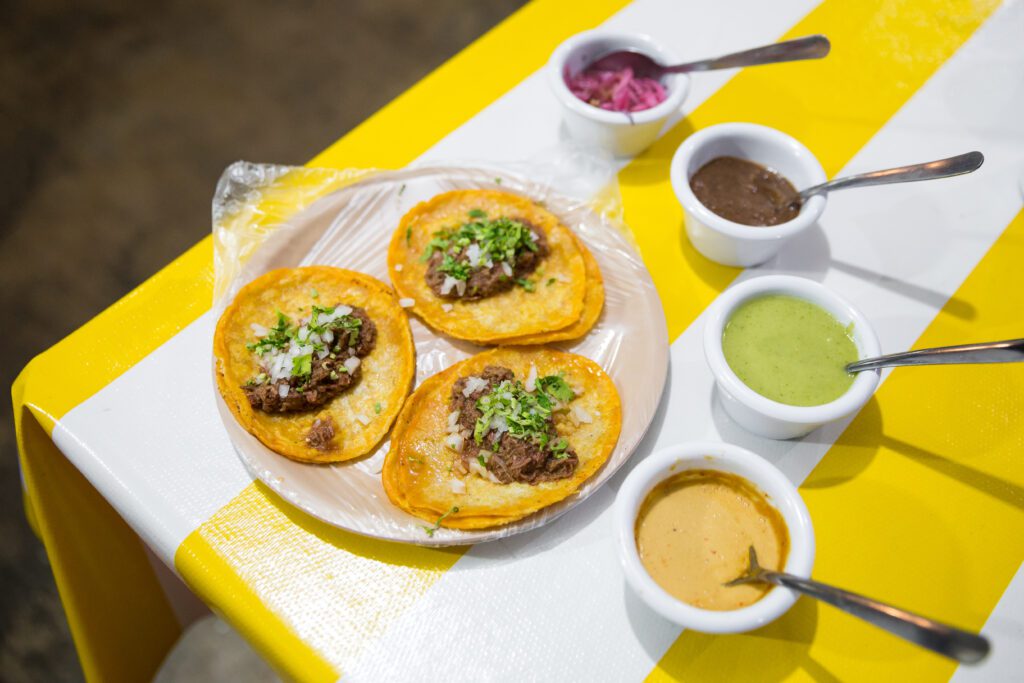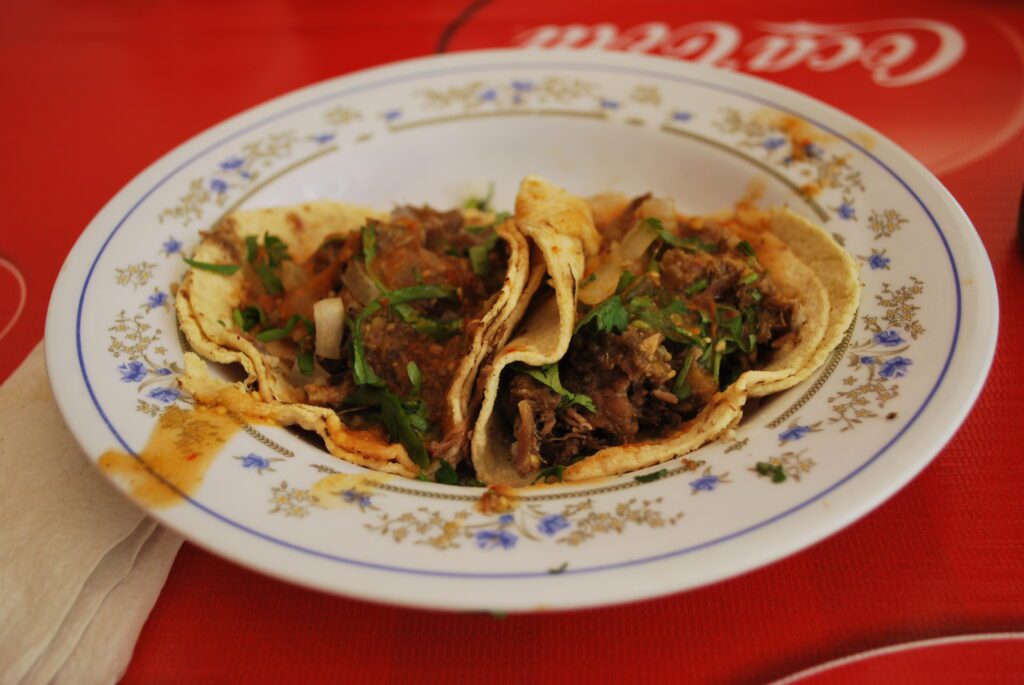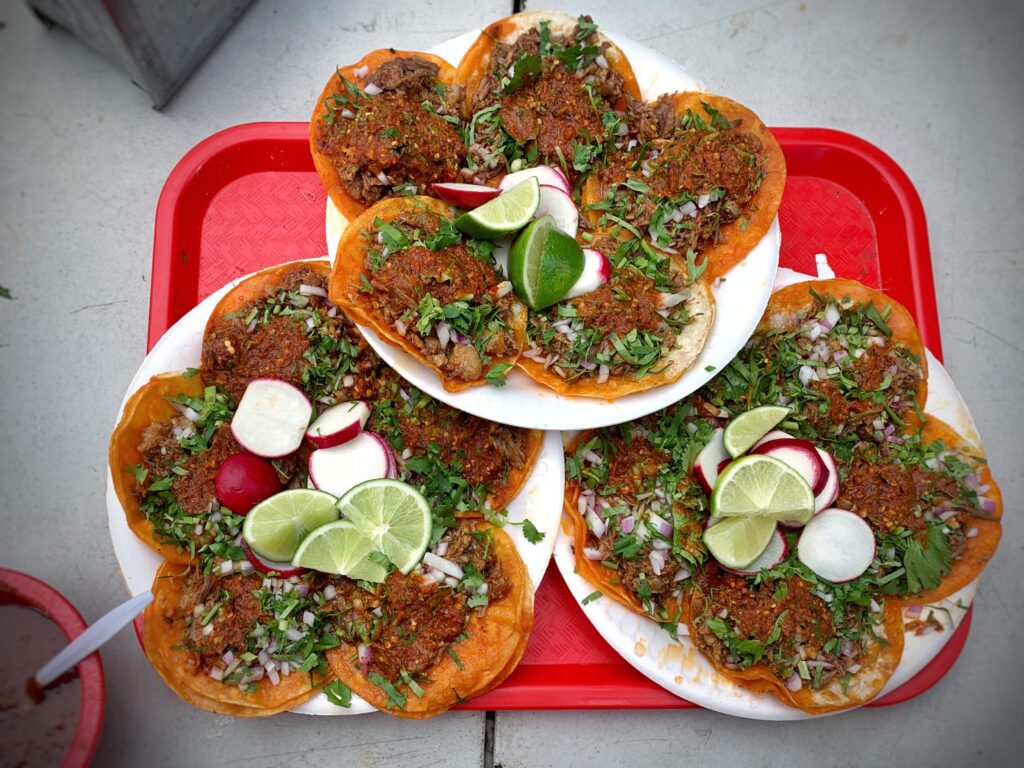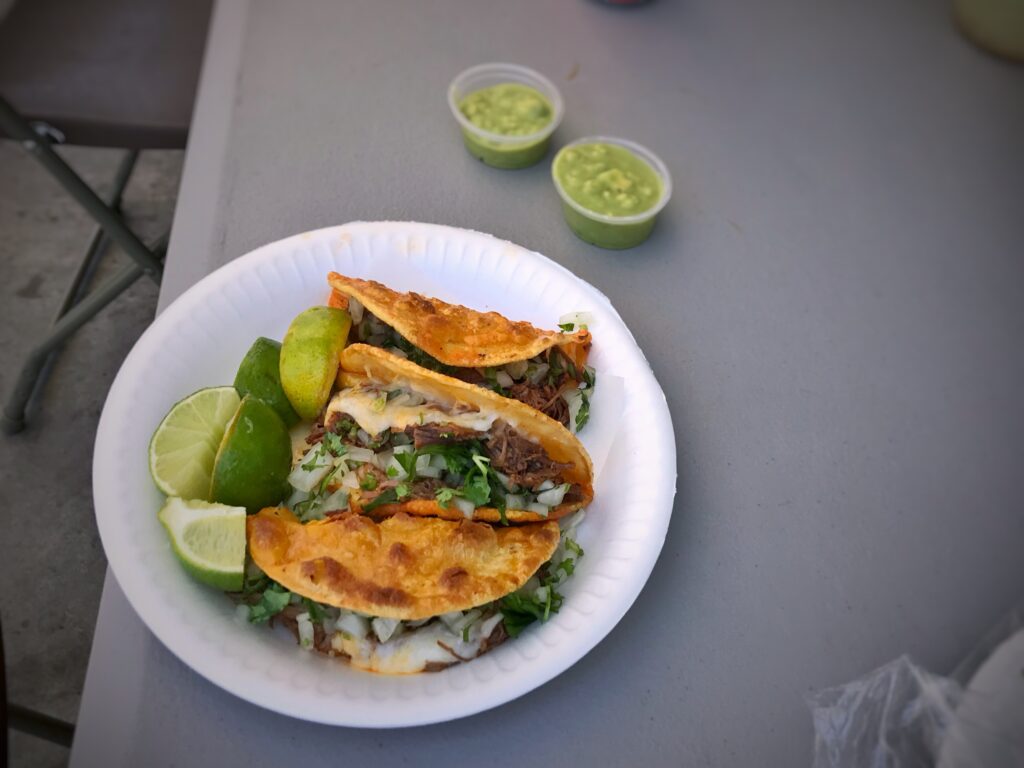Are Tacos Gluten-Free? What is gluten and why is it a concern for some people?
What is gluten and its role in food
Gluten is a type of protein that is commonly found in grains such as wheat, barley, and rye. It is the element responsible for the elasticity and chewy texture in dough. Gluten can be found in a variety of food products, including bread, pasta, cereals, and baked goods.
Who should avoid gluten and why
- Individuals with celiac disease:
- Celiac disease is an autoimmune disorder that affects the small intestine. When individuals with celiac disease consume gluten, it triggers an immune response that damages the villi in the small intestine, leading to malabsorption of nutrients. Therefore, people with celiac disease must strictly avoid gluten in their diet to prevent symptoms such as abdominal pain, bloating, diarrhea, and nutrient deficiencies.
- Non-celiac gluten sensitivity:
- Some individuals may experience symptoms similar to those with celiac disease when consuming gluten, but do not have celiac disease. This condition is known as non-celiac gluten sensitivity or gluten intolerance. While the exact cause of this sensitivity is not fully understood, eliminating gluten from the diet can help alleviate symptoms such as bloating, gas, fatigue, and headaches.
- Wheat allergy:
- Wheat allergy is an allergic reaction to proteins found in wheat, including gluten. It is different from gluten-related disorders like celiac disease and gluten sensitivity. People with a wheat allergy must avoid all products containing wheat, including those with gluten.
- Other medical conditions:
- Some individuals with certain autoimmune disorders, such as Hashimoto’s thyroiditis or rheumatoid arthritis, may find that avoiding gluten helps manage their symptoms. However, the connection between gluten and these conditions is not yet fully understood, and more research is needed.
It is important to note that not everyone needs to avoid gluten. For individuals without any gluten-related disorders or allergies, consuming gluten-containing foods is perfectly safe and provides essential nutrients. It is always best to consult with a healthcare professional or registered dietitian for personalized advice regarding gluten consumption.


Common ingredients in tacos and their gluten content
Corn tortillas and their gluten status
When it comes to tacos, the choice of tortilla can have a significant impact on their gluten content. Traditional corn tortillas are typically gluten-free, as they are made solely from ground corn. However, it is important to check the label or ask the manufacturer to ensure that there is no cross-contamination during the production process, as some brands may process corn tortillas in facilities that also handle gluten-containing grains.
Fillings and toppings that may contain gluten
While the tortillas may be gluten-free, the fillings and toppings added to tacos can sometimes contain gluten. It is essential to be aware of these ingredients, especially for individuals with gluten-related disorders or allergies. Here are some common fillings and toppings that may contain gluten:
| Ingredients | Gluten content |
|---|---|
| Flour tortillas | Contain gluten |
| Breaded or battered meats or seafood | Contain gluten |
| Soy sauce | Contains gluten |
| Salsa or sauce thickened with wheat flour | Contains gluten |
| Pre-packaged taco seasoning | May contain gluten |
It is important to read labels carefully and be cautious of cross-contamination when selecting fillings and toppings for tacos. Opting for homemade fillings or those explicitly labeled gluten-free can help ensure a safe and enjoyable taco experience for individuals with gluten-related disorders or allergies.
Gluten-free options for taco shells
Gluten-free corn tortillas
For individuals who follow a gluten-free diet, corn tortillas are a popular and safe option for making tacos. Made from ground corn, corn tortillas are typically gluten-free. However, it is still important to double-check the label or inquire with the manufacturer to ensure that there is no cross-contamination during the production process. Some brands may process corn tortillas in facilities that also handle gluten-containing grains, which can lead to inadvertent gluten exposure.
Alternative options like lettuce wraps
For those looking for an alternative to traditional taco shells, lettuce wraps can be a great gluten-free option. Lettuce leaves can serve as a versatile and fresh substitute, providing a crisp and refreshing base for taco fillings. Simply remove the outer leaves of a head of lettuce, wash them thoroughly, and use them as a wrapper for your taco filling. Lettuce wraps not only eliminate gluten concerns but also add a unique and healthy twist to your taco experience.
In summary, when it comes to choosing gluten-free options for taco shells:
- Corn tortillas are a common choice, but always check for potential cross-contamination.
- Lettuce wraps provide a fresh and gluten-free alternative.
By selecting suitable taco shell options, individuals with gluten-related disorders or allergies can enjoy delicious tacos without worrying about any adverse reactions.
Gluten-free protein options for tacos
Grilled chicken and its gluten status
Grilled chicken is a popular protein option for tacos that is typically gluten-free. However, it is important to be aware of any marinades or seasonings that may contain gluten. Some prepared marinades or spice blends may include wheat-based ingredients, so it is crucial to read the labels carefully or make your own marinade using gluten-free ingredients. Additionally, if ordering grilled chicken from a restaurant, it is recommended to inquire about the ingredients and cooking methods to ensure there is no gluten cross-contamination.
Shrimp and its gluten status
Shrimp is another delicious and gluten-free protein option for tacos. Fresh or frozen shrimp is naturally gluten-free but be cautious of pre-cooked or packaged shrimp that may have been processed with gluten-containing ingredients. Again, reading the labels and checking for any potential cross-contamination is essential. If purchasing from a seafood counter or restaurant, it is advisable to inquire about the preparation method to avoid any accidental gluten exposure.
In summary, when it comes to selecting gluten-free protein options for tacos:
- Grilled chicken can be gluten-free, but check for marinades and seasonings.
- Shrimp is naturally gluten-free, but be cautious of packaged or pre-cooked shrimp.
By choosing the appropriate protein sources, individuals with gluten-related disorders or allergies can enjoy flavorful and satisfying tacos without compromising their dietary needs. It is always important to read labels carefully, stay informed about ingredients, and ask questions about the preparation process to ensure a truly gluten-free meal.


Gluten-free taco fillings and toppings
Fresh vegetables and their gluten status
Fresh vegetables are a fantastic and naturally gluten-free option for taco fillings and toppings. Vegetables such as lettuce, tomatoes, bell peppers, onions, and cilantro are all safe to consume for those following a gluten-free diet. However, it is essential to wash and prepare them properly to avoid cross-contamination from gluten-containing surfaces or utensils.
Guacamole and salsa
Guacamole and salsa are two classic taco toppings that are typically gluten-free. Homemade guacamole using fresh avocados, lime juice, onions, and spices is an excellent choice. When purchasing store-bought guacamole or salsa, it is important to check the labels for any gluten-containing ingredients. Some brands may add thickeners or flavorings that contain gluten, so reading the labels carefully is crucial.
When it comes to selecting gluten-free taco fillings and toppings:
- Fresh vegetables like lettuce, tomatoes, bell peppers, onions, and cilantro are safe options.
- Homemade guacamole using fresh avocados and other gluten-free ingredients is a great choice.
- Store-bought guacamole and salsa should be checked for gluten-containing ingredients.
By choosing these gluten-free fillings and toppings, individuals with gluten-related disorders or allergies can enjoy delicious and satisfying tacos without compromising their dietary needs. Always remember to read labels carefully, prepare ingredients properly, and ask questions when dining out to ensure a truly gluten-free meal.
Cross-contamination risks and how to avoid them
Potential sources of cross-contamination in taco preparation
When preparing tacos, there are several potential sources of cross-contamination that can introduce gluten into your meal. It is important to be aware of these risks and take proper precautions to avoid them. Some potential sources of cross-contamination include:
- Using the same cutting board or knife that has been used to prepare gluten-containing ingredients.
- Cooking or storing gluten-free fillings and toppings in containers or pans that have previously been used to cook gluten-containing foods.
- Using gluten-containing condiments, such as soy sauce or malt vinegar, without realizing that they contain gluten.
- Allowing gluten-containing crumbs or residue to come into contact with gluten-free ingredients.
Tips for preventing cross-contamination
To ensure that your tacos remain gluten-free and safe for consumption, follow these tips to prevent cross-contamination:
- Use separate cutting boards, knives, and utensils for gluten-free ingredients.
- Clean and sanitize all cooking surfaces, pans, and utensils before using them for gluten-free ingredients.
- Check the labels of condiments and sauces to ensure that they are gluten-free.
- Avoid using shared containers or pans that may have come into contact with gluten-containing foods.
- Keep gluten-free ingredients separate from gluten-containing ingredients during storage and preparation.
By following these tips and being vigilant about cross-contamination risks, individuals with gluten-related disorders or allergies can enjoy delicious tacos while maintaining their dietary needs. Taking the extra steps to prevent cross-contamination is vital for ensuring the safety and enjoyment of gluten-free meals.


Gluten-free taco restaurants and chains
Popular gluten-free taco restaurants
If you’re looking to enjoy gluten-free tacos outside of your own kitchen, there are several popular restaurants that offer gluten-free options. Some of these include:
- Chipotle: Chipotle offers a customizable menu where you can choose gluten-free taco fillings and toppings.
- Taco Bell: Taco Bell has a dedicated gluten-free menu that includes their Crunchy Taco, Soft Taco, and Power Menu Bowl.
- Moe’s Southwest Grill: Moe’s Southwest Grill offers gluten-free taco options and provides a detailed allergen menu for customers to reference.
Tips for dining out safely
When dining out at taco restaurants, it is important to keep a few tips in mind to ensure a safe gluten-free experience:
- Research the restaurant beforehand and check if they have a gluten-free menu or options.
- Ask your server about their cross-contamination practices and if they have separate preparation and cooking areas for gluten-free items.
- Clearly communicate your dietary needs and ask about any potential hidden sources of gluten in the menu items.
- Be cautious of shared fryers, as items fried in gluten-containing batter can contaminate a previously gluten-free item.
Following these tips and being proactive about your gluten-free needs can help you enjoy delicious tacos while dining out safely at various gluten-free taco restaurants and chains.
Gluten-free taco recipes
Homemade gluten-free taco shell recipe
For those looking to make their own gluten-free tacos at home, here’s a simple recipe for homemade gluten-free taco shells:
Ingredients:
- 1 cup gluten-free all-purpose flour
- 1/2 teaspoon salt
- 1/2 cup water
- 2 tablespoons oil
Instructions:
- In a mixing bowl, combine the gluten-free flour and salt.
- Gradually add the water and oil to the flour mixture, stirring until a dough forms.
- Divide the dough into 4 equal portions and shape each portion into a ball.
- Roll out each dough ball between two sheets of parchment paper until thin and round.
- Heat a non-stick skillet over medium heat and cook each tortilla for 1-2 minutes on each side until lightly browned and cooked through.
- Remove the tortillas from the skillet and let them cool slightly before shaping them into taco shells.
Gluten-free taco filling ideas
Once you have your gluten-free taco shells ready, it’s time to decide on the filling. Here are some delicious gluten-free taco filling ideas:
- Grilled chicken with salsa verde: Marinate chicken breasts in a mixture of gluten-free soy sauce, lime juice, and garlic. Grill the chicken until cooked through and serve with a homemade salsa verde made from tomatillos, onions, cilantro, and lime juice.
- Black bean and corn: Sauté black beans, corn, onions, and bell peppers in a skillet with some gluten-free taco seasoning. Serve the mixture in the taco shells and top with chopped tomatoes, avocado, and a squeeze of lime juice.
- Baja fish tacos: Coat white fish fillets in a gluten-free flour and cornmeal mixture seasoned with spices like paprika and cumin. Fry the fish until golden and crispy. Serve in the taco shells with shredded cabbage, pico de gallo, and a drizzle of chipotle mayo.
- Beef barbacoa: Slow-cook beef chuck roast with gluten-free beef broth, chipotle peppers, and spices until tender. Shred the beef and serve it in the taco shells with diced onions, fresh cilantro, and a squeeze of lime juice.
These are just a few ideas to get you started, but feel free to get creative and customize your gluten-free tacos with your favorite fillings and toppings. Enjoy your homemade gluten-free tacos without worrying about cross-contamination or hidden sources of gluten.


Conclusion
Summary of gluten concerns with tacos
Gluten is a protein found in wheat, barley, and rye. For individuals with Celiac disease or gluten sensitivity, consuming gluten can cause various digestive symptoms and long-term health issues. Tacos typically contain ingredients like flour tortillas, taco seasoning, and sauces, which may contain gluten. Therefore, it is crucial to make gluten-free tacos at home to ensure they are safe and suitable for consumption.
Final thoughts on enjoying gluten-free tacos
With the right recipes and ingredients, anyone can enjoy delicious gluten-free tacos. Making homemade gluten-free taco shells is easier than you may think, and they can be filled with a wide variety of flavorful options. Whether you prefer grilled chicken, black bean, fish, or beef barbacoa fillings, there are countless possibilities to explore.
By using gluten-free ingredients and being mindful of any potential cross-contamination risks, you can savor your tacos without worrying about the negative effects of gluten. Remember to read labels carefully, opt for certified gluten-free products, and prepare your fillings from scratch whenever possible.
Investing a little time and effort into creating gluten-free tacos allows you to take control of your diet and enjoy a safe and satisfying meal. So gather your favorite gluten-free ingredients, get creative with your fillings and toppings, and indulge in the flavors of homemade gluten-free tacos.
Are Tacos Gluten-Free: Gluten Concerns with Tacos
Q: Are tacos gluten-free?
A: It depends on the ingredients used to make the tacos. While traditional tacos typically consist of corn tortillas, meat, and vegetables which are gluten-free, certain fillings and toppings may contain gluten. It’s important to be cautious and informed about the specific ingredients in your taco.
Q: What makes tacos potentially gluten-containing?
A: Common gluten-containing ingredients that can be found in tacos include flour tortillas, some seasonings, sauces, and fillings. Flour tortillas are the main culprit as they are made from wheat. Additionally, some sauces may contain gluten as a thickening agent, and certain seasonings may also include hidden gluten ingredients. It’s essential to check the ingredients and ask the server if you have any doubts.
Q: Can I find gluten-free tacos at restaurants?
A: Yes, many restaurants now offer gluten-free options for their customers, including gluten-free tortillas or lettuce wraps. However, it’s always best to inform the staff of your gluten intolerance or dietary preference so they can guide you better. They might have special procedures in place to avoid cross-contamination or gluten exposure.
Q: How can I ensure the tacos I eat are gluten-free?
A: When dining out, inform the server or chef about your gluten intolerance or dietary requirements. They can guide you through the menu and suggest gluten-free options. It’s important to ask about the specific ingredients used in the taco fillings, sauces, and seasonings to ensure they are safe for you to eat.
Q: Are store-bought taco shells and tortillas gluten-free?
A: Many stores offer gluten-free taco shells and tortillas made from corn or other gluten-free grains. These options can be found in the gluten-free section or with the regular taco products. Be sure to carefully read the labels to verify that they are certified gluten-free to avoid any potential cross-contamination.
Q: Can I make gluten-free tacos at home?
A: Absolutely! Making gluten-free tacos at home gives you full control over the ingredients and ensures a safe and delicious meal. Use certified gluten-free tortillas or lettuce wraps, and choose gluten-free fillings, sauces, and seasonings. There are plenty of gluten-free recipes available that cater to various dietary preferences.
Q: What are some gluten-free taco fillings and toppings?
A: There are a variety of gluten-free options for taco fillings and toppings, such as grilled chicken, beef, fish, shrimp, or beans. Fresh vegetables like lettuce, tomatoes, onions, and peppers are also gluten-free. Additionally, toppings like guacamole, salsa, and cheese are typically gluten-free, but it’s always a good idea to double check the ingredient list.
Q: What should I do if I accidentally consume gluten in a taco?
A: If you accidentally consume gluten and experience symptoms like stomach pain, bloating, diarrhea, or fatigue, it’s important to listen to your body. Drinking plenty of water, resting, and sticking to a gluten-free diet for a few days may help alleviate discomfort. If symptoms persist or worsen, it’s recommended to seek medical advice from a healthcare professional.
In summary, while tacos can be gluten-free, it’s crucial to be mindful of the specific ingredients used in the taco shells, fillings, and toppings. Whether dining out or preparing tacos at home, always take the necessary steps to ensure your meal is safe and free from gluten.



Hey there! If you’re a fan of authentic Mexican cuisine, you’re in for a treat with Humberto Cruz at pointcafeny.com. They take immense pride in serving their customers with home-cooked, genuine Mexican dishes crafted with the finest ingredients. From flavorful salsa to mouthwatering tamales and enchiladas, they offer an experience that brings the taste of family food from back home right to your table. Don’t forget to check out their tempting Daily Specials for a delightful culinary adventure!
